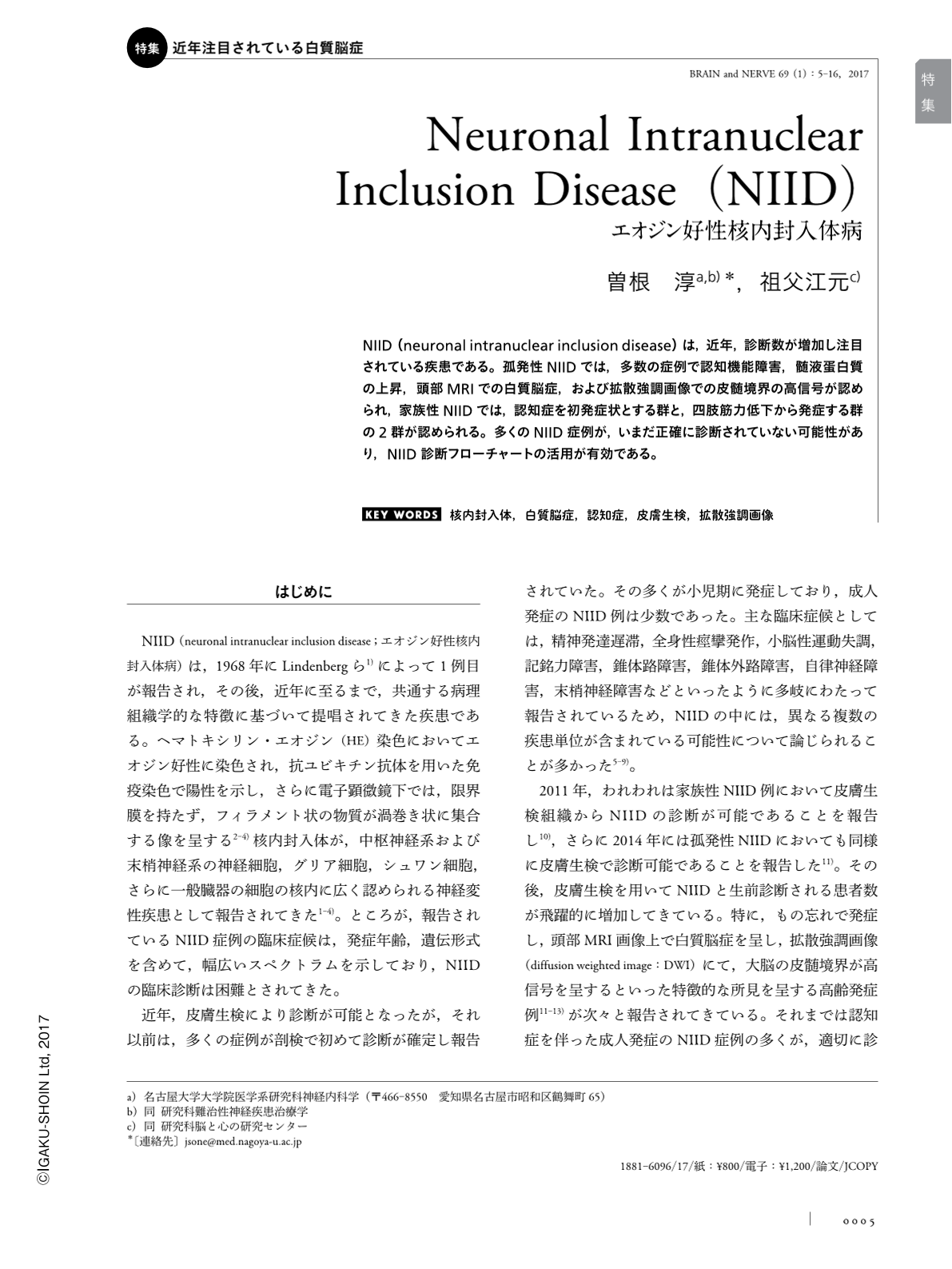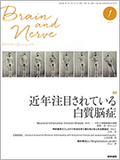Japanese
English
- 有料閲覧
- Abstract 文献概要
- 1ページ目 Look Inside
- 参考文献 Reference
- サイト内被引用 Cited by
NIID(neuronal intranuclear inclusion disease)は,近年,診断数が増加し注目されている疾患である。孤発性NIIDでは,多数の症例で認知機能障害,髄液蛋白質の上昇,頭部MRIでの白質脳症,および拡散強調画像での皮髄境界の高信号が認められ,家族性NIIDでは,認知症を初発症状とする群と,四肢筋力低下から発症する群の2群が認められる。多くのNIID症例が,いまだ正確に診断されていない可能性があり,NIID診断フローチャートの活用が有効である。
Abstract
Neuronal intranuclear inclusion disease (NIID) is a gradually progressing neurodegenerative disease characterized by eosinophilic hyaline intranuclear inclusions in the central and peripheral nervous systems and in certain visceral organs. The number of reported cases of NIID has recently increased after the introduction of skin biopsy for the diagnosis of NIID. Patients with sporadic NIID usually present with dementia, elevation of overall protein levels in the cerebrospinal fluid, leukoencephalopathy on head magnetic resonance imaging (MRI), and high signal intensity in the corticomedurally junction on a diffusion-weighted (DW) imaging. Among patients with familial NIID with age at onset <40 years, muscle weakness is observed most frequently; these cases are classified in the “limb weakness group.” Among patients with familial NIID with age at onset >40 years, dementia is the most prominent symptom; these cases are classified in the “dementia dominant group.” We proposed a flowchart for diagnosis adult-onset NIID. The prevalence rate of adult-onset NIID may be higher than previously thought, and NIID may be underdiagnosed in the population. NIID must be considered during the differential diagnosis of leukoencephalopathy and neuropathy, for which this flowchart for adult-onset NIID diagnosis may prove beneficial.

Copyright © 2017, Igaku-Shoin Ltd. All rights reserved.


